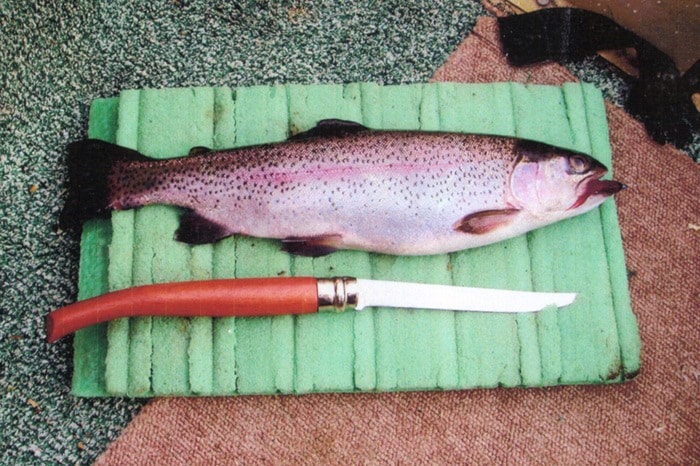Fly fishing is fishing with a fly on still waters. That may be a little confusing, but believe me there is a difference.
Fly fishing involves active casting, retrieving and applying the skills we learn in a lifetime involved in this magnificent madness we call angling. Fishing with a wet-fly is the act of trolling the fly through the water in appropriate places to catch a fish; but does not involve coordinated skills we associate with casting a fly over the water. I practise both types of fishing with flies, as do most of the anglers I know.
The important message from this column is that anybody capable of rowing, paddling, or moving a boat through the water with swim fins is capable of fishing with a fly and joining that huge group of anglers that fly fish.
Throughout the months of May and June we enter a period when catching trout on flies can outperform other types of angling. Creatures such as leeches spend their lifecycle as leeches with primary changes in size from small creatures about two centimetres long all the way up to large creatures that can be in excess of 12 centimetres.
They will vary in colour from black to brown and maroon. They are some of the favoured patterns used by anglers that regularly pull them behind the boat in varying depths and at slow speeds. Fly fisherman will have lines with long leaders on their reels that sink to various levels in the water column. Generally, leeches are found within two or three feet of the bottom; however just when you think you have it all figured out you catch fish on leeches in the upper half of the water column.
If you are fishing with spinning outfits put a small swivel on the line and tie your fly on a suitable leader there to four feet long. To aid in putting the fly in the fishing zone put a couple of split shot to on the main line to assist in sinking the pattern. Now that you have the leech patterns under control, let's look at other underwater patterns that also work.
During the next few months we will see dragonflies, sedges and a wide variety of insects that are important trout food. Many of these insects are small – as in mosquitoes – but others are quite large. Dragonflies and beetles spend up to four years in some cases as nymphs that crawl and forage under the water. It is at these stages that they are important trout food. Their nymph or pupae as in the case with sedge patterns are added to the wet flies such as leeches.
I recommend going to a sporting goods store and buying from a knowledgeable clerk two each of the following. Dark green dragonfly nymphs, rusty brown dragon fly nymphs in size eight or 10 hooks, two sedge pupae patterns in dark green patterns on number 10 or 12 hooks, and two black or maroon nymphs in number eight or 10 size hooks. Fish them as you would leech patterns.
To complete your collection, buy four muddler minnow patterns, two about size 10 and two about size 12. Their primary use is to imitate stickleback fish that inhabit most of our Island lakes and are important trout food. Troll the sticklebacks patterns fairly close to the surface along a brushy shoreline at a somewhat faster speed than you travel for the other patterns.
Most anglers want to catch fish when they go on the water. This small collection of wet flies that are important in the boxes of most still-water anglers should get you into trout on a fly.
It is my firm belief that one of the simplest of all ways we use to attract trout to our hooks is the simple act of dragging or rowing wet fly patterns through the water at the appropriate depths and speed.
Depending on the type of craft you fish from will greatly affect the speed at which your fly will move through the water. Learning to move your fly through the water at appropriate speeds has much to do with whether or not you will catch fish.
Some insects move quite quickly through the water as in the case of freshwater shrimps, however most of the creatures you are trying to imitate move slow and slower through the water most of the time. When fishing with the above patterns move slowly. Good luck.
Ralph Shaw is a master fly fisherman who was awarded the Order of Canada in 1984 for his conservation efforts. In 20 years of writing a column in the Comox Valley Record it has won several awards.
